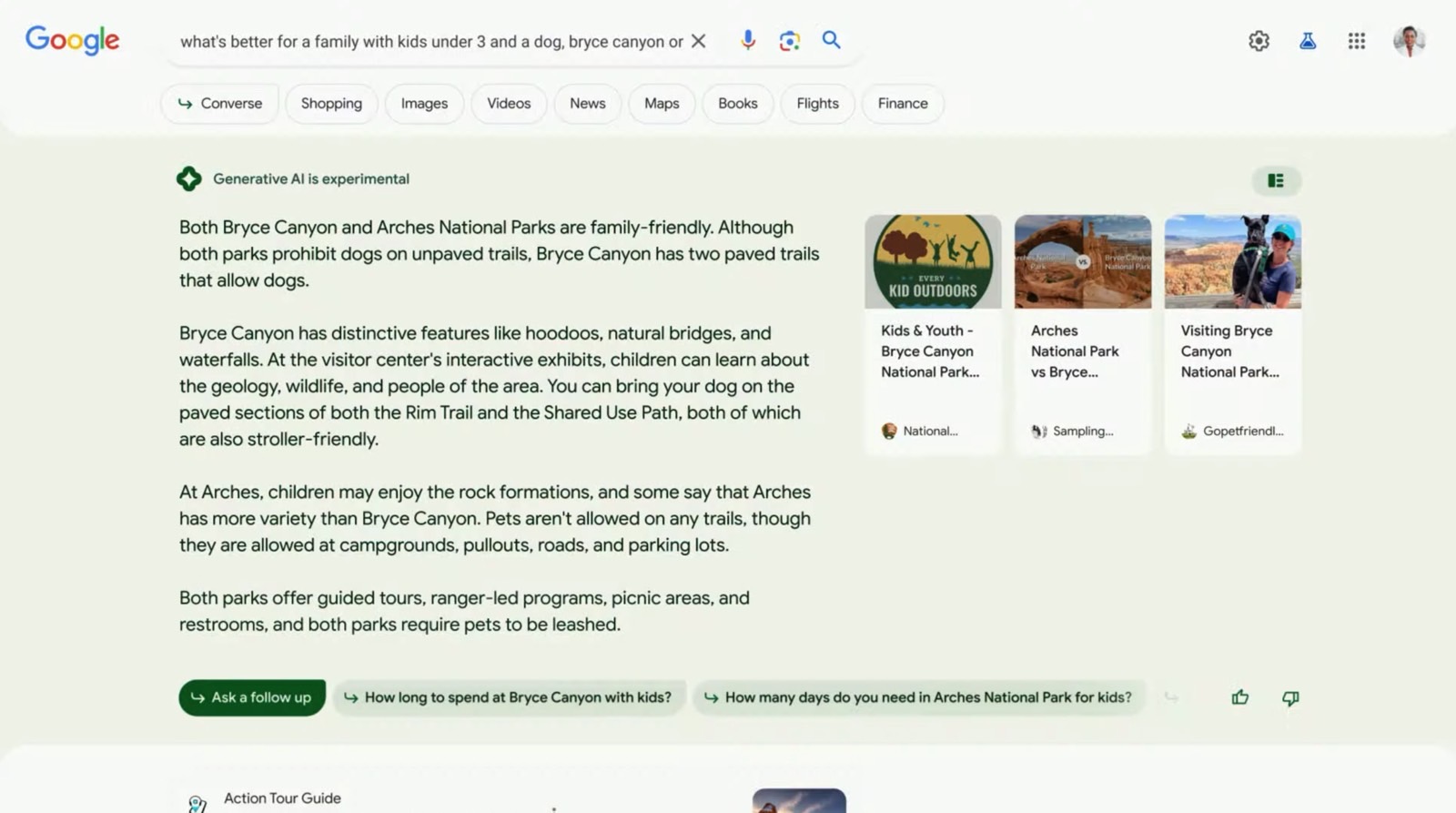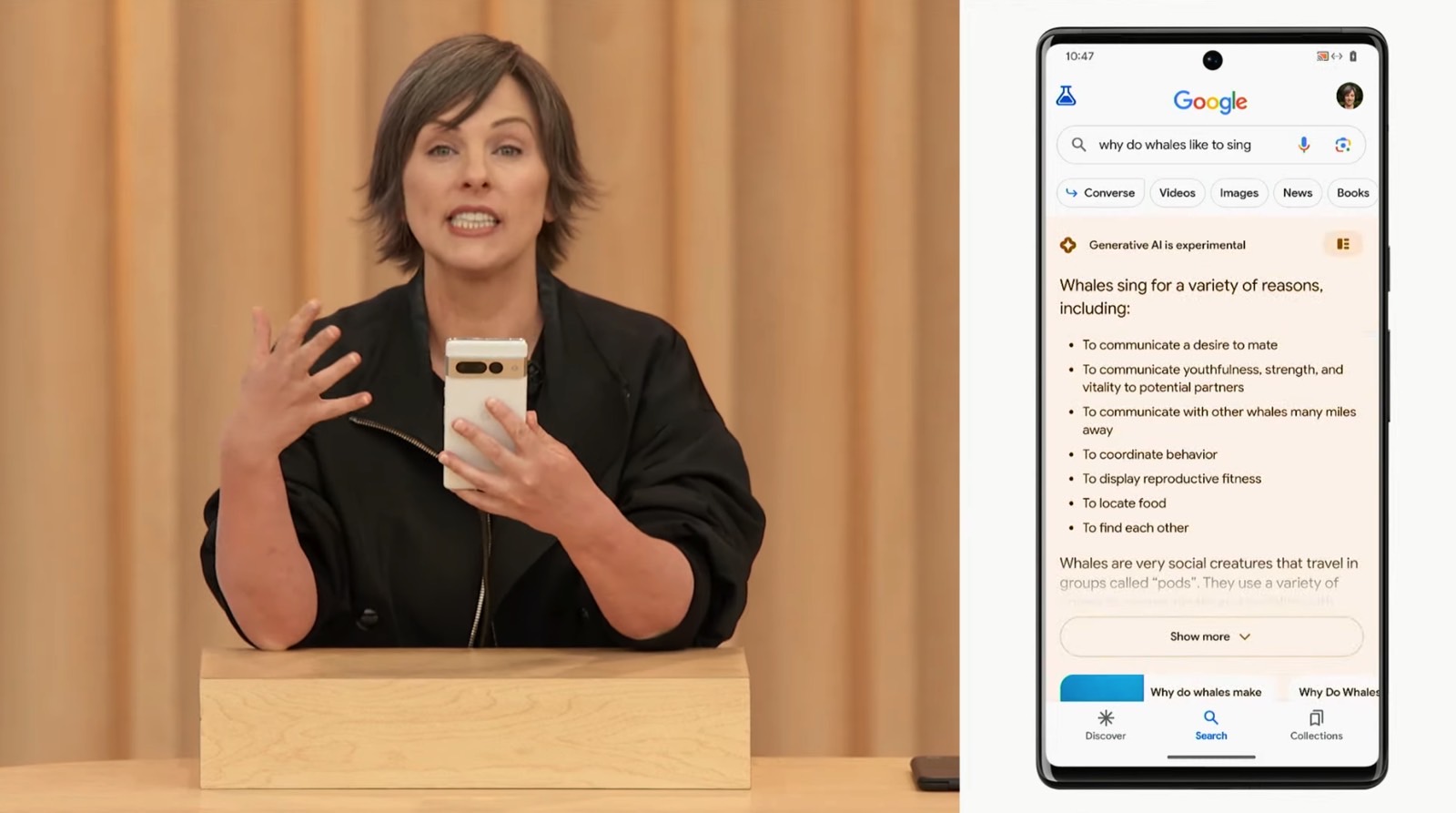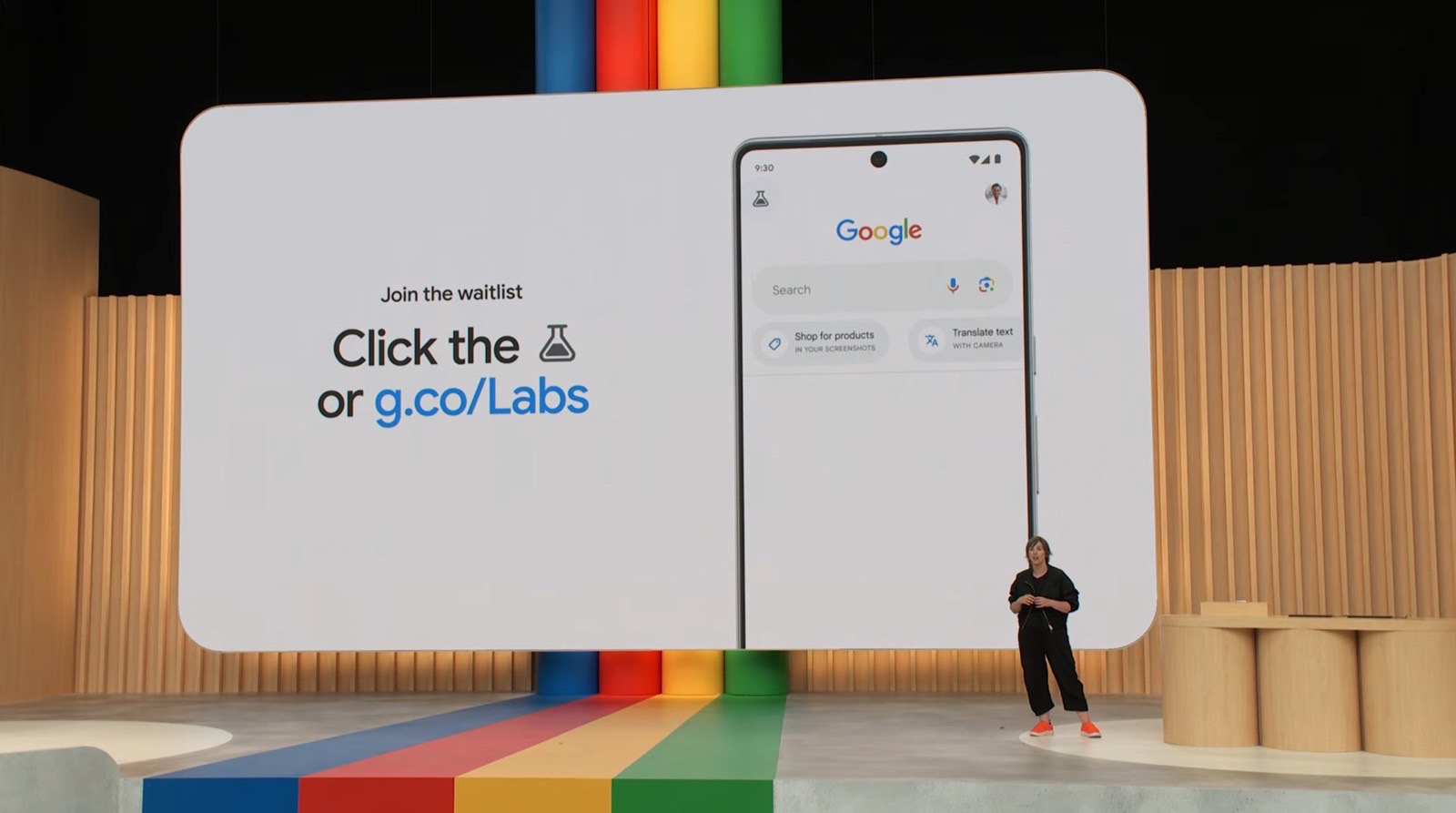Google’s Bard got a big update at I/O 2023 which should let Google better compete with OpenAI’s ChatGPT. Among other things, Google dropped the waitlist for Bard so that Google generative AI is available for anyone to try out. But Google also unveiled a second, separate generative AI for Search that has nothing to do with Bard. It doesn’t even have a cool name, as Google calls it Search Generative Experience (SGE).
Google’s new generative AI Search will be available in a limited fashion in the coming weeks, and there’s a waitlist for it. However, Google gave us an idea of what Search SGE can do, and the demo was just what you’d expect from a generative AI product. Spectacular.
Google’s Cathy Edwards demoed Search Generative Experience at I/O 2023, revealing from the get-go the feature you’ve always secretly wanted from Google Search. The ability to ask complex questions rather than having to separate the various elements in your query. Google used this example to highlight the powers of SGE:
what’s better for a family with kids under 3 and a dog, bryce canyon or arches
Large language models that make generative AI possible support that, and so will Google Search SGE. Ask your complex question in the new Search, and Google will give you a new results page.

At the top, you’ll see the generative AI response, with links to the sources it uses to generate the answer. Scroll, and you get to more websites. But this is also where you can ask more follow-up questions.
As you can see in the images, Google clearly marks the generative AI responses as experimental. As a reminder, generative AI answers can be misleading, and Google will not escape that.
Google Search with AI will be able to provide instructions and suggestions. That includes helping you shop for the type of product you want. But the whole process might get faster as the generative AI surfaces the kind of products, complete with relevant links to stores and the latest prices. That’s something ChatGPT can’t do, as OpenAI’s chatbot isn’t connected to the web.

Ads will continue to be part of the Google Search experience even after the arrival of generative AI. And ads will be placed above the generative AI answer (shown in these examples in green).
Unlike Bard, which is available right now, Google Search SGE is more experimental. You’ll need to get on a waitlist via Google Search Labs, which will be available to users in the US initially. You’ll need to use the Google app on Android or iPhone or Chrome on desktop for Google Search SGE.

You’ll need to check out this link to join Google Search SGE. Also, keep tabs on this Google blog post for more information.








